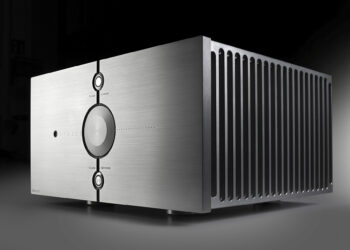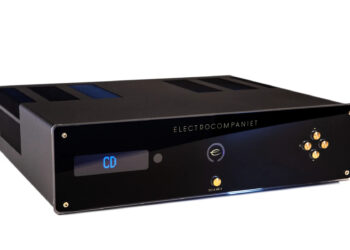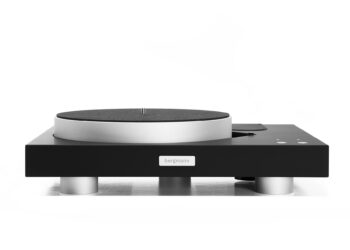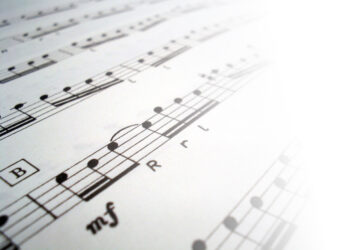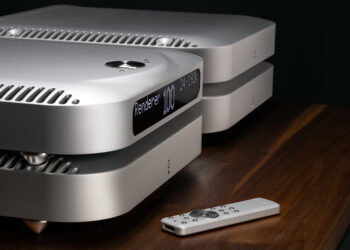I am sincerely concerned with the question - in what direction should the so-called Hi-End develop in order to survive in the world of modern, rapidly developing technologies? Audio lovers with experience, even with the "Soviet" backround, have experienced several invasions of completely different consumer qualities of audio equipment, which once made us take out of our pockets almost the last penny.
Remember what it was like? The queue near the shop "Berezka" (a commissioner on Shabolovka, an employee of the Bolshoi Ballet stage, a navigator of a long-distance steamer) are the sources of acquisition of the very equipment, which today is scornfully called "vintage". And once Sansui 919 or Pioneer of Exclusive series were almost unattainable dream and, accordingly, the ideal of sound. The equipment was appreciated by the number of indicators, pens and adjustments, the more, the cooler.

Then there was minimalism. Out of nowhere emerged as the right standard for single-stroke lamps, instead of Nakamichi or Akai steel (with respectful aspiration) to pronounce quite different names: Kondo, Jeff Rowland, Krell. Sony brand became almost a swear word, Technics forgot. Suddenly it turned out that the wires (acoustic, interlocking, then power and, finally, digital) seriously affect the sound. Equalizers, as well as tone compensation, are evil, only worsening the original signal. That's why all the old equipment is in the dump, you have to buy a new one.
Sold. Bought it. And - again. And again. We read "Audiomagazin". We realized that this is not the case, and ... It is not surprising that in parallel emerged sects living by their own empirical laws, in which (holy place is not empty) spread shoulders of all kinds of guru, broadcasting with the aplomb that they only know the "path" that will lead the suffering, to the "true audio".
Why am I talking about all this nostalgia? And the fact that at the start of the next "zero" (and we still live, listen and strive for the perfect sound) with "this case" has only got worse. The number has only made the situation worse. The appearance of each new chip or recording format is (always!) another "revolution", so to keep up with the rapid progress you have to update your fleet of digital devices almost every three to five years. Which, contrary to Moore's law, do not fall in price at all, and (in about the same proportion) only increase their value.
And all this time we, the inhabitants of the "Russian side" of the planet, were waiting for the appearance of a domestic product, by its parameters of the corresponding top "High End" category. We waited long, so long that we were already tired, and stopped hoping. There were a lot of promises and prototypes that "are about to tear everyone up". And what about the fact? In fact, in real systems "with the budget" was bought exclusively "firm". First of all, it concerned digital-analog converters. Brands that "know how to make sound" are well known: DCS, NAGRA, BURMEISTER, CH, ESOTERIC, ACCUPHASE, MSB ... They can play then, but for such "obscene", exceeding even six-digit cost of "full set", that even audiophiles, for whom "unlimited" is not a whim, and the norm of life, involuntarily think.
Besides the number of zeros of wealthy music lovers (and they, contrary to popular belief, purchasing audio components will not be spoiled by money marks, but on the contrary, they are carefully considered), the very precarious position of another "king of the mountain" in the hierarchy of world audio is alarming. Too fast and too unpredictable to change the priorities in the world of numbers. Have audio magazine reviewers been moping with the "volume" of RSM for a long time, claiming that the bitrate 24/96 is excessive even for the most complex orchestral music? But the same experts (suddenly!) found the "transparency" of records made in the "new" DSD format, which had been unavailable before. One can only guess what discovery awaits us tomorrow (there is no doubt about its inevitability).
I would like to point out that each such "revolution" requires considerable financial investments. Which may be superfluous in the future digital "tomorrow". Apsemplers, external clicks, jitter suppressors, audiophile routers - how much of this good is sold (and bought!) in the hope of getting "from the figure" the same, familiar from the sound of a vinyl record or (oh, unattainable dream!) a real orchestra sound.
But where to go, we're looking. And so, personally, I finally found it. DAC, which "plays everything", and does not have those annoying (I, in this case, I will speak only from the first, my own face, no "general conclusions"), the shortcomings with which you have to put up with, considering as a component in your audio system other devices of the same purpose and the same price group.
So, welcome! What makes the purchase especially pleasant and enjoyable is Made in Russia. Details, of course, are very different inside, but the idea, design and implementation are exclusively ours, domestic. What only I have not collected in my current audio corner - Canada, USA, Germany, Switzerland, England and, of course (childhood memories) Japan. This is the first time I have had a domestic product in this "kalashny row". Therefore, it is doubly interesting, how it will show itself in such company?
First about the sound. What attracted and, let's just say, charming? The answer's vague - musicality. The one you wait for, like a divine revelation, printing out another box and bringing out another, bought for your blood device.
To remind you, as it usually happens. Got it, got it. And how's it going? Is it playing? It's great! For that kind of money! What if it's "in detail"? Well... The middle is kind of "drying". Probably wires. Silver, copper. What does it say about our gravitsappa in the purses? Yeah, it ruthlessly shows the weaknesses of the other components. There!
And - here we go. What else can I change? Let's try: tube, transistor. Feeding. The wires, I see. Other "improveers", too. In the end, it turns out that the room is also "not playing". We need a hall (or rather a lock). All these shortcomings new tsap "naked", and now it is necessary to decide what to do? Money (five, six, how many zeros are there?!...) has been spent, the system of "dreams" is as if collected, but - the bass languished (or vice versa, humming) tops ringing (dim, no after-sounding, no bells). The middle is dry...
Does that look familiar? Mm-hmm. I read the complimentary reviews in serious magazines and wanted it all. So what now?
All of a sudden, everything was playing from scratch. I mean, out of the box. No heating, right away. I turned it on, and there it was, the Soundbell! It's a real one. It's alive. The one that makes the "strings of the soul" vibrate (already dried up). Allows you to remember how the mlelel in the 9th grade from "Machine Head", to immerse yourself again in the passengers of the tube of Miles Davis, to feel the mighty breath of the "organism of the orchestra" by Mravinsky.
Without any special "dancing with a tambourine" I suddenly got a sound that gave me back that music, for the sake of full perception of which we spend so huge, disproportionate in terms of most people around us, sums. Does that happen? Yes, it happens...
The subject of my admiration is a well-known "in narrow circles" digital-to-analog converter of Chernov Audio "Apollo" company. Announced a couple of years ago, it finally found its final embodiment. I will analyze its sound, so to speak.
I already told you about musicality. In my coordinate system, it was a shock. A device out of the box can't play like that. Well, it can't. Practice shows, and here it is, right away!
The device arrived directly from the conveyor belt. It is known from the past experience - at the first switch-on any device demonstrates its "real sound" for the first 15-30 minutes, then it "leaves" and the heating process begins, as a result of which (often) the first (rapturous) impressions are not restored (or confirmed, alas, only partially). In this case, everything is exactly as it happened: Apollo pleased me with his singing for half an hour, then the sound became stiffer, found a certain (poorly captured technically, but clearly felt on a subconscious level) "background". The top became duller, the middle was more "formal", the bass was blurred.
To rejoice further, I set up hours later like this in 200. A week of warm-up is the minimum after which any equipment starts to play "for real". What a surprise it was when, a couple of days later, deciding to listen to how things were going, I found that the original sound had fully recovered and was now just being polished. Projected in 3D volume of the afternoon sound, finds the flesh of "yesterday's lunch" and "hiccups of the diaphragm" of the bass, vibrates the grand piano deck, pleases the ear tubes. The process, as we liked to say at the dawn of our Russian capitalism, went on. And it is moving in the absolutely right direction.
Now the technical details. The praises are a good thing, of course. But the inevitable question is, how? On what basis do you get such definitely positive impressions?!
The first, most important test for me, looks like this. How many times is it written that the correct CD can only play a multibit. DAC based on "ancient" (but always young 1541, 63, 1702-1704 and others) chips. And here I have something to show for comparison. Until now, in my main system, the main source of numbers was (and is still partially present) a set of BURMEISTER CD-transport and DAC. The thing is absolutely uncompromising in terms of design and approach to the components, where everything is present in the "harsh language of the poster". A separate power supply for the digital to analogue converter? You're welcome! Cast aluminium (aircraft, there is no other) platforms for each component with carbon pads? Here they are (9 kg, by the way. Each). Passive drive for uniform disc rotation? Of course! A digital output? Whether it's balance, transformer or "glass", i.e. optics. Anything you can think of to eat. As the main core for digital-to-analogue conversion, naturally those that enjoy the well-deserved reputation of the "most analogue" 1704 K.
This Burmeister 970 has never lost to anyone in "native format". Never. And I was sure that this time too... That's where the first sunstroke happened. When they just pulled it out of the box, turned it on, it was a regular thing. 969 "hanging" at 970 in the most top-of-the-range connection for their mutual design - AES/EBU, with BNC tapping. APOLLO, as they say, "on delivery" - by RCA. И? A goal in one gate! Of course, not 7:1, but - for the overwhelming advantage. Only the "German national team" this time - in a deaf defense, not attacking, but rather "takes out the balls"!

It can't be? There must be at least parity - our "peasant" can't play like "Johann Sebastian"!? Is that even possible? How??? Nevertheless, it's a fact! It's playing! I remove the "psychological factor", compare it blindly. Impressions are confirmed. Maybe it's the wires? I switch on the contrary: Apollo now on balance and tact transport from its own generator, 970 - through a separate transformer connector on the RCA. No miracles, the gap is only widening. "Peasant" sounds clearer, more transparent. And, quite unexpectedly, an unpredictable bonus - a generous spring river crossed from the speakers of the "engage". The one that should always be present when listening to music, but, as it turned out, if there was any earlier, in homeopathic doses...
Then came the heating and the sound "swam", the experiments had to stop temporarily. At the same time, there was time to relive the shock and get used to the new reality. As it turned out, it had come! Originally the goal of Apollo (for me) was to play DSD content. I didn't plan any experiments with DSD, and I turned on both devices from the same source just for the sole purpose of making another "control shot". That wasn't it!
I don't want to go into detail. What was compared to what, how you turned on and off, what and where you stuck it. It's written all over the place because "it's the right thing to do." But it's hardly worth spending your (and your) time, listing the components and various CDPs, which my Apollo had time to visit. It is enough that absolutely everyone who had the pleasure to listen to him has the same opinion. From "very good" to "excellent". So I will try to display what I consider the main thing in his sound.
Одним из выдающихся свойств Apollo является его способность «раздвигать» пространство, делать сцену не только объемной, но и (в истинном, первоначальном значении этого слова) голографической, трехмерной. Этот эффект хорошо знаком всем, кто бывает на «живых» концертах. Спорят о лучшем месте в зале, количестве скрипок слева или справа, но само существование всех инструментов, и солирующих и сопровождающих, в «основном звуковом поле» подразумевается изначально.
Alas, it's much harder to catch that presence on the record. Let's start with the fact that when you create a phonogram about the "chorus" violins usually do not think. In the opinion of phonogram producers, polyphony is not required for a "standard listener" at all. That's why - once, with a slider on the remote, the violin was sent to the foreground, the oboe sounding too actively was cut off, two - the cello was taken away somewhere in the back, and after it all the other strings, because (according to the sound director) in this place the ears of the listener should be attacked exclusively by wind!...
This arbitrariness has long been habitual and even tolerated (after all, listening to the recording we agree with the right of the person who made it this way to interpret the music...) if "in the rest" other instruments in the recording space are still present. That is, for an experienced audiophilist (or audiophilist) it is written somewhere in the subconscious that they must be - even if not explicitly, at least in the background. This "presence" is well heard on vinyl records, it is one of the reasons why the "ancient" format was reborn in our digital era. And often many, even the most "branded" representatives of modern digital equipment go somewhere. And it is the source that is to blame for the absence of fluttering somewhere in the background and hanging in the space of the vault and pipe, because on the same acoustics and amplification all this (here, listen) is, and when you switch to another (also very expensive and widely steamed) device disappears somewhere.
There is everything that is written about so much in the "audio magazines": detail, punch, brilliance, marked as a place for instruments scene. But what recreates on a subconscious level the natural sound of a real orchestra or jazz trio - alas. And it's only and exclusively the DAC's fault. If he is not able to project a "live picture", it will not appear next. How many disputes have already happened on this "slippery" topic, how many virtual copies are broken in the empty debate. And now it's there. Because it's complicated. Not just "complicated", but "very complicated". And, as it turned out, listening to a lot of different representatives of digital audio is expensive. Sometimes it's obscenely expensive.

But Apollo is doing a great job with this impossible task - recreating the full atmosphere of the recording. It's even doing great. And it does so naturally that (after the first astonishment) there is a strong belief that this is the way it should always be played. Music cannot sound different because it is its "natural state". However, it is necessary to jump to another source without warning, and all the magic is instantly destroyed, the lights of the ramp are extinct, Ophelia dies before she wakes up. Instead of "just listening and enjoying", questions begin to be tormented. Who "strangled" the pipe? Where did the tools in the background go? Who is this strange drum that drinks from somewhere around the corner and then goes straight to nowhere? Does it look familiar? That's right.
I take it easy, I do not listen up, I do not strain myself. Instead of analyzing (albeit subconscious, but - constantly feeling somewhere near the cerebellum, the creak of these tightly spinning "gears"...) the field of wonders of new discoveries, fresh reading of seemingly familiar music. I've already shared my fondness for Deep Purple, which I've learned since childhood. It seems that you know by heart any melody played, and - caught "as then" and - without breaking away, until the last final chord. Even more discoveries - in jazz, where (for me for the first time) you feel what the "mood of the performer" is. And now it is clear that such discoveries will continue!
I have to ask you, what's next? Okay, 2019 was a success! Finally, a device appeared in the home audio system, which closed the questions for a long time, at least for a few years. What about the "itchy audiophile" and (thoroughly eradicated, but alas, indestructible) desire to try new hardware? There is a feeling that my next acquisition will be a new player of files from "Laboratory Chernova". Somewhere in virtual space "saw - heard - shown" it is already present, and when it appears, I already see it next to Apollo.
That's why you shouldn't relax, but "forge money." It seems that very soon, already in this year, 2020, it will be very much needed!
Author of text and photo: Yuri Sharapov
















